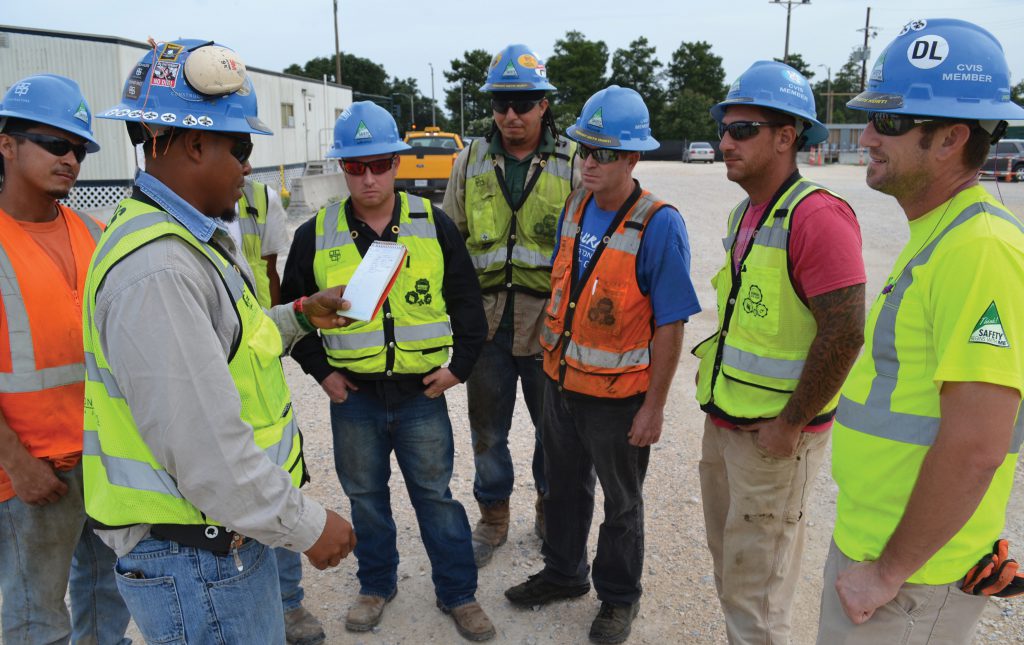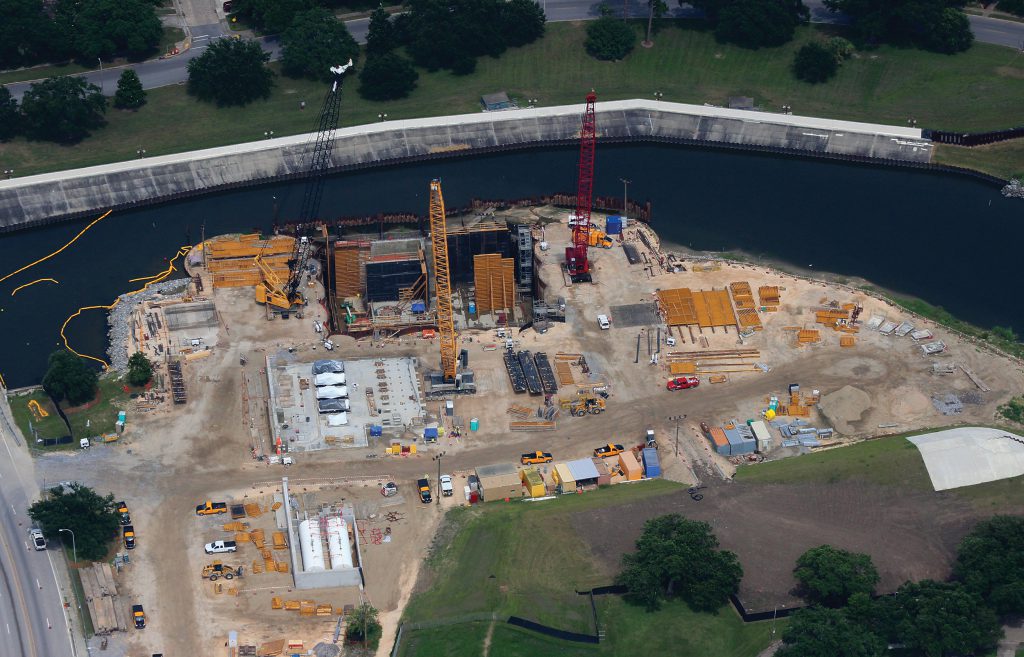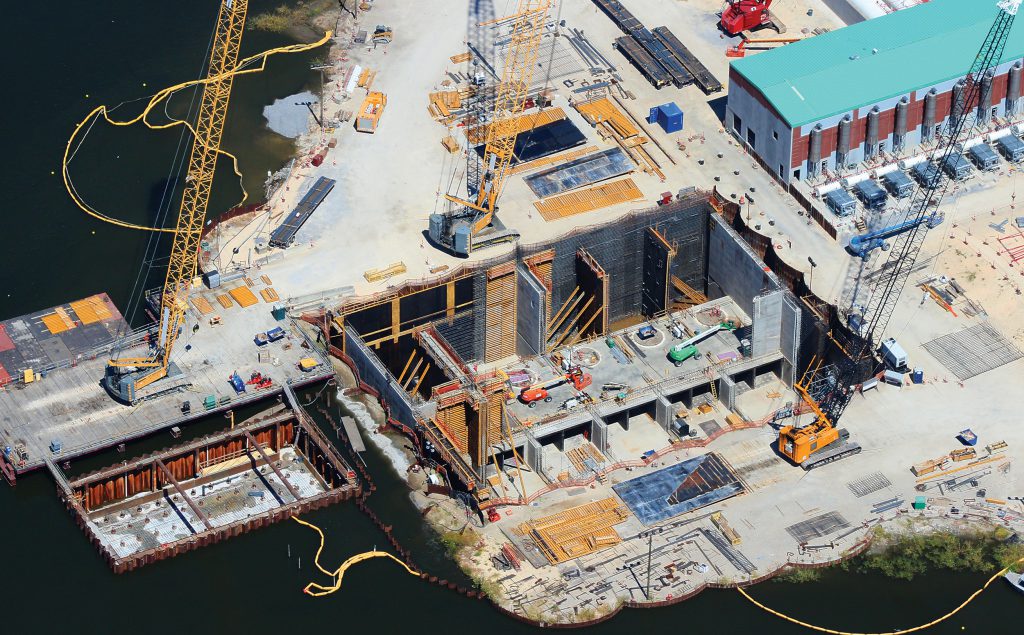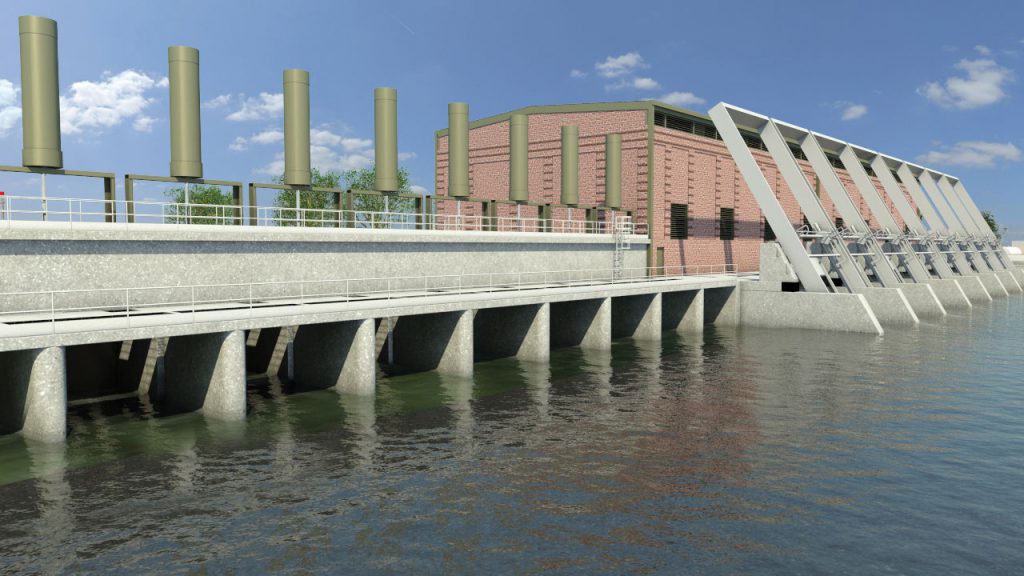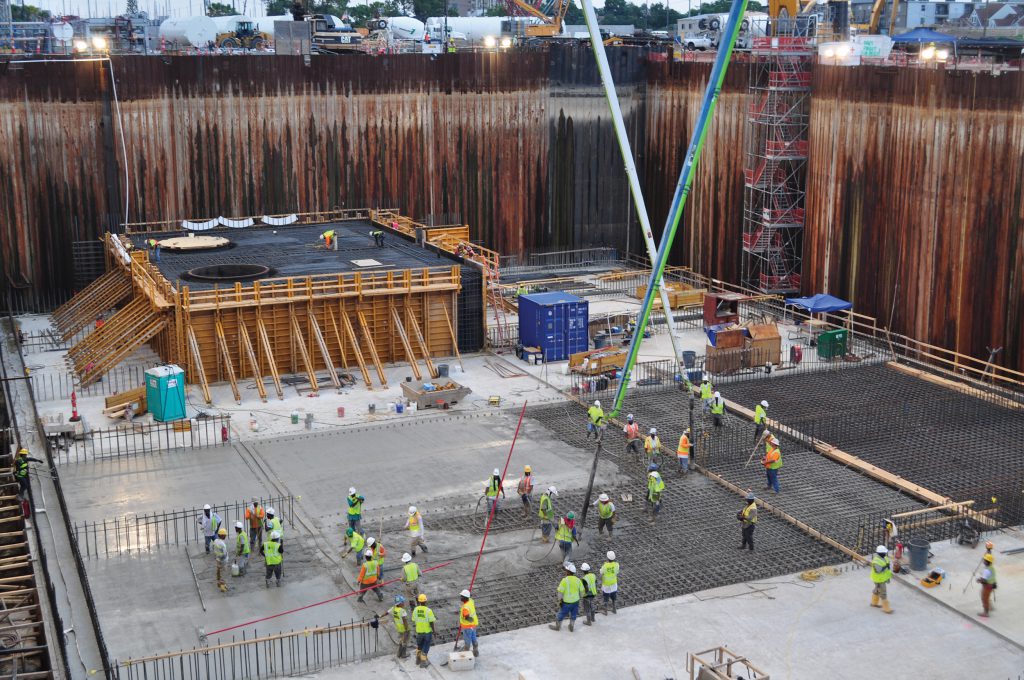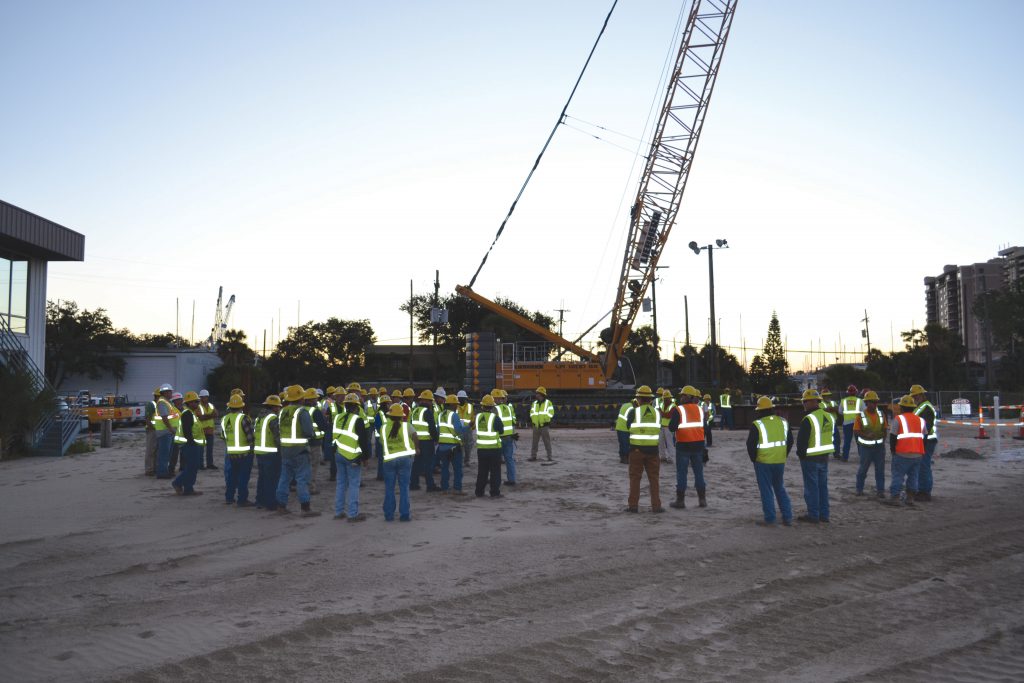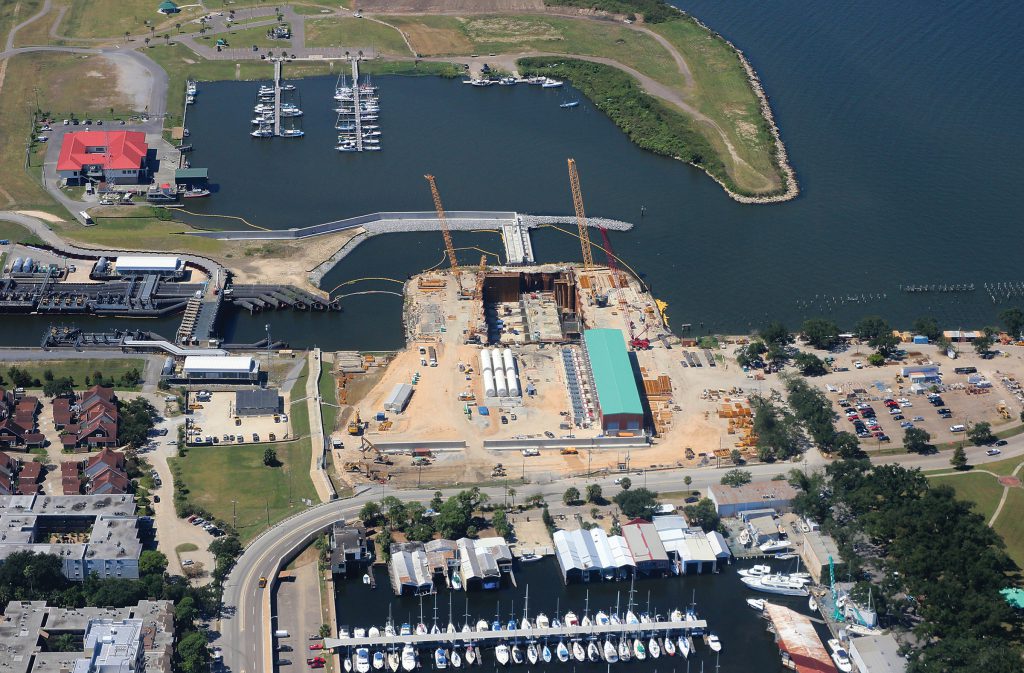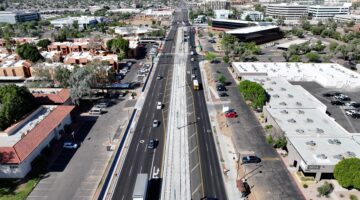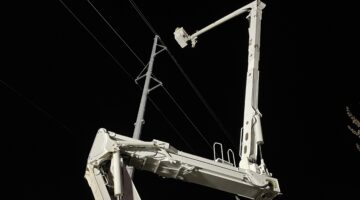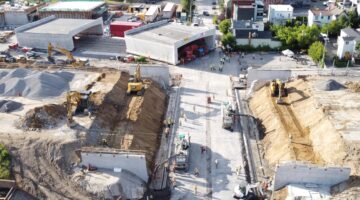Do an Internet search for “New Orleans” and in the list of links about Mardi Gras, the French Quarter and Hurricane Katrina, you’re likely to find the word “resilience.”
It’s been 10 years since Katrina devastated the city with a wall of water — generating a 28-foot storm surge and 55-foot waves. It also took the lives of more than 1,400 people. A decade later it still ranks as the costliest natural disaster in the history of the United States.
Those who survived the storm will never forget the experience. But today there are signs of healing all around New Orleans.
A recent poll by the Kaiser Family Foundation and NPR showed that 82 percent of current residents have seen progress in repairing the levees. That’s a reflection of their faith in the efforts of city officials to react rapidly should it ever face these circumstances again.
At the center of those efforts is a $14.45 billion project being carried out by the U.S. Army Corps of Engineers (USACE) to construct the area’s Hurricane and Storm Damage Risk Reduction System (HSDRRS).
Since Katrina, teams led by the USACE have been working to construct and strengthen the levees, floodwalls, gated structures and pump stations that form the 133–mile Greater New Orleans perimeter system. They’ve also been improving approximately 70 miles of interior risk reduction structures.
The goal: A system that will reduce damage risks from a storm surge event that has a one percent chance of occurring in any given year, known as a 100-year storm surge.
Last, but far from least
The final major HSDRRS task is construction of the Permanent Canal Closures & Pumps (PCCP) project.
A $615 million design-build contract was awarded to PCCP Constructors JV. The collaboration includes Kiewit, Traylor Bros. and MR Pittman.
Three permanent gated storm surge barriers and brick façade pump station structures — at the mouths of the outfall canals at 17th Street, Orleans Avenue and London Avenue — will replace the temporary closure structures that were completed before the start of the 2006 hurricane season.
Each station is designed to perform a critical role for the city: Prevent a storm surge from entering the canals, thus greatly reducing the risk of flooding in the highly populated interior areas of the city.
The PCCP project is the last item on the HSDRRS list, but far from the least. It is crucial for the entire city, said John Proskovec, project sponsor.
“The Corps planned all along to do this piece last. These three stations evacuate water that drains to them from all over New Orleans. For the most part, this provides a main protection for the city proper.”
A great communication partnership
Convincing residents of the importance of the project wasn’t an issue. What could have been, though, was asking for residents’ patience as the team prepared to place the pumps and build the stations.
The three pump stations all are located in or very near residential neighborhoods with destination parks and lakefront for Lake Pontchartrain. For those in the area, living with inconveniences like noise and truck traffic would require another kind of resiliency.
“We recognized that it would be a challenge early on,” said Dan Bradley, USACE senior project manager. “A lot of people had concerns about what the structures would look like, vibration, pile-driving and traffic impact to the neighborhood. We wanted to be very frank and upfront about that.”
It was the job of the Public Affairs (PA) team, led by the USACE’s PA office and supported by the PCCP PA team, to get the word out. They formed “a great team from the beginning,” Bradley said.
“By conducting dozens of public information meetings, sending mailers and weekly email updates, and even going door to door, the PA team helped communicate the anticipated impacts to the public very effectively,” said Jay Proskovec, PCCP PA manager.
The team’s efforts have been appreciated by residents and also recognized by peers. Last year, the PCCP Public Affairs team was awarded a top honor by the International Association of Business Communicators for Excellence for Strategic Public Engagement.
Like London Avenue, all the pump stations are located in or near a residential area. As a result, USACE and the PCCP Constructors hold public information meetings, send mailers and use weekly email updates to keep residents informed on construction progress and impacts.
This artist’s rendering of the 17th Street bypass gates and pump station depicts the permanent gated storm surge barriers and brick façade structures replacing the temporary closure structures at each of the three outfall canals.
Crews pour the concrete pump station foundation at 17th Street. More than 70,000 cubic yards of structural concrete will be used before the completion of the project – enough to pour a 7-foot-thick slab of concrete over the entire flooring of the Superdome.
An artist’s rendering of the Orleans Avenue pump station, one of three being built. During a tropical weather event, each of the stations will move rainwater out of the canals, around the gates and into Lake Pontchartrain. Each pump will be equipped with a stand-alone emergency power supply to operate independently of any public utility.
Going to unprecedented depths
Another challenge early on came in creating a special form — the temporary cofferdams that would allow the team to set the pumps in place underwater.
The twist was finding a way to convey city drainage from the old pump stations to the new ones, setting structural piles at a depth of an unprecedented 50 feet, and also dealing with soil that was muddy and full of soft clay. The resiliency of the finished project depended on the design, materials and craftsmanship.
Crews spent two years digging out the earth. From there, they set piles two feet thick — ranging from 75 to 110 feet in length — and poured a six-foot-thick concrete foundation for the pumps.
“We started the planning for this a year before we started the project,” said Project Manager Travis Baumgartner. “We brought in our JV partner, Traylor Bros., and the Kiewit team for multiple brainstorming meetings.”
If any of the pile placement or concrete pour had failed, it would have had a dramatic, and detrimental, impact on the schedule and the financial outcome. The team ended up with an open-cell design unique to the area, as well as to the U.S. and around the world.
“Getting these things right and doing it successfully exhausted a lot of the risk on this project,” Baumgartner says. “It really showed the value in joint-venture partnering, both internally and externally.”
Proud to be a part of it
Being a witness to where New Orleans was a decade ago and where it is today makes the Kiewit team especially pleased to be part of the transformation, especially considering how the city has bounced back with so much resilience, John Proskovec said.
“When we came here 10 years ago, there was devastation. Some of the people in the Corps that we’ve worked with had houses that were destroyed in Katrina. Today, you drive around and see houses being built everywhere.”
Baumgartner, who also worked on the HSDRRS West Closure Project, says that seeing the remnants of what Katrina left behind has had an impact.
“It really motivates you to make sure you’re building the job right so these people don’t have to go through that again. You look back and you’re proud that you’re a part of it — to be part of a structure that adds so much value to the community.”
